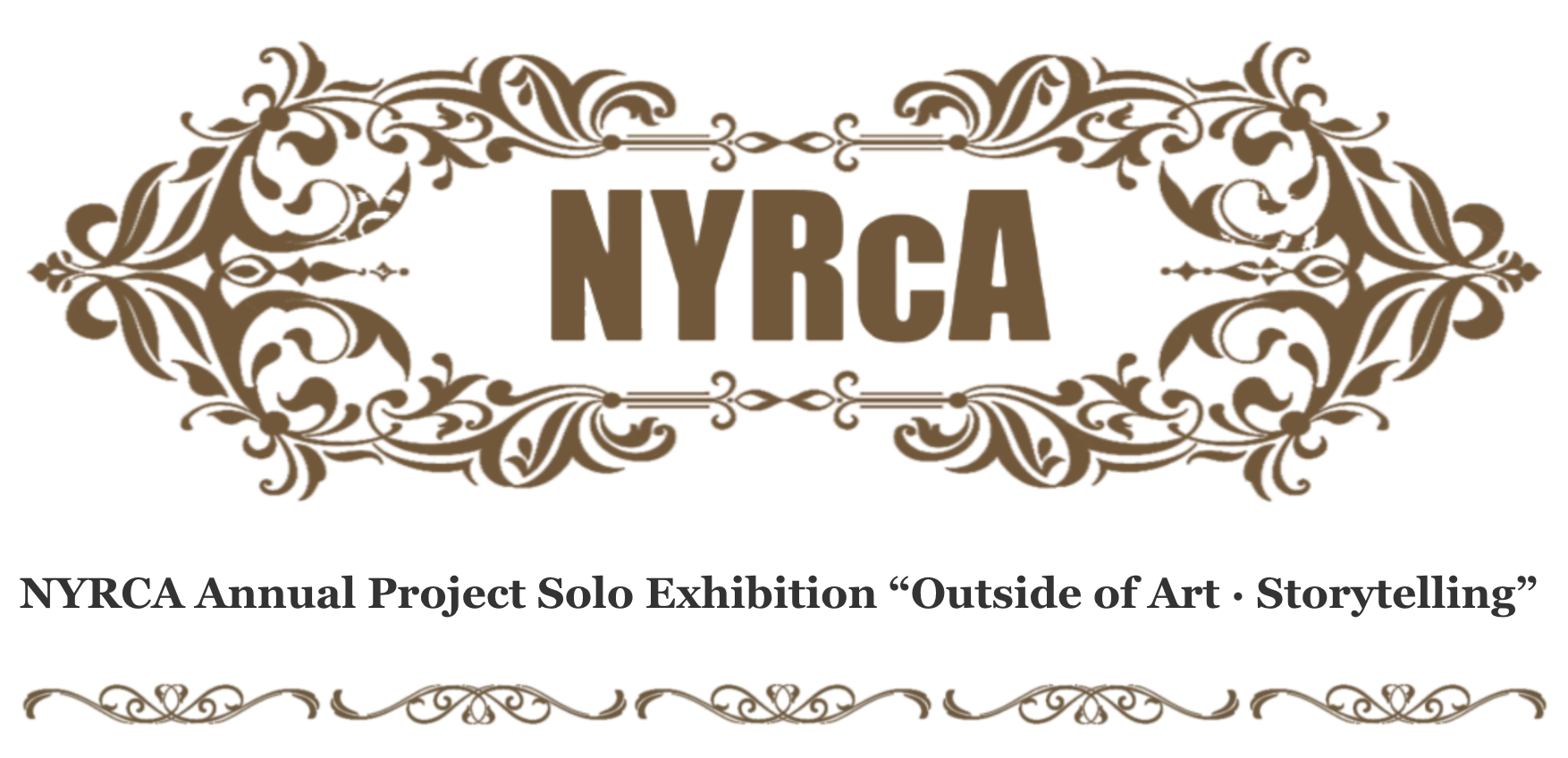
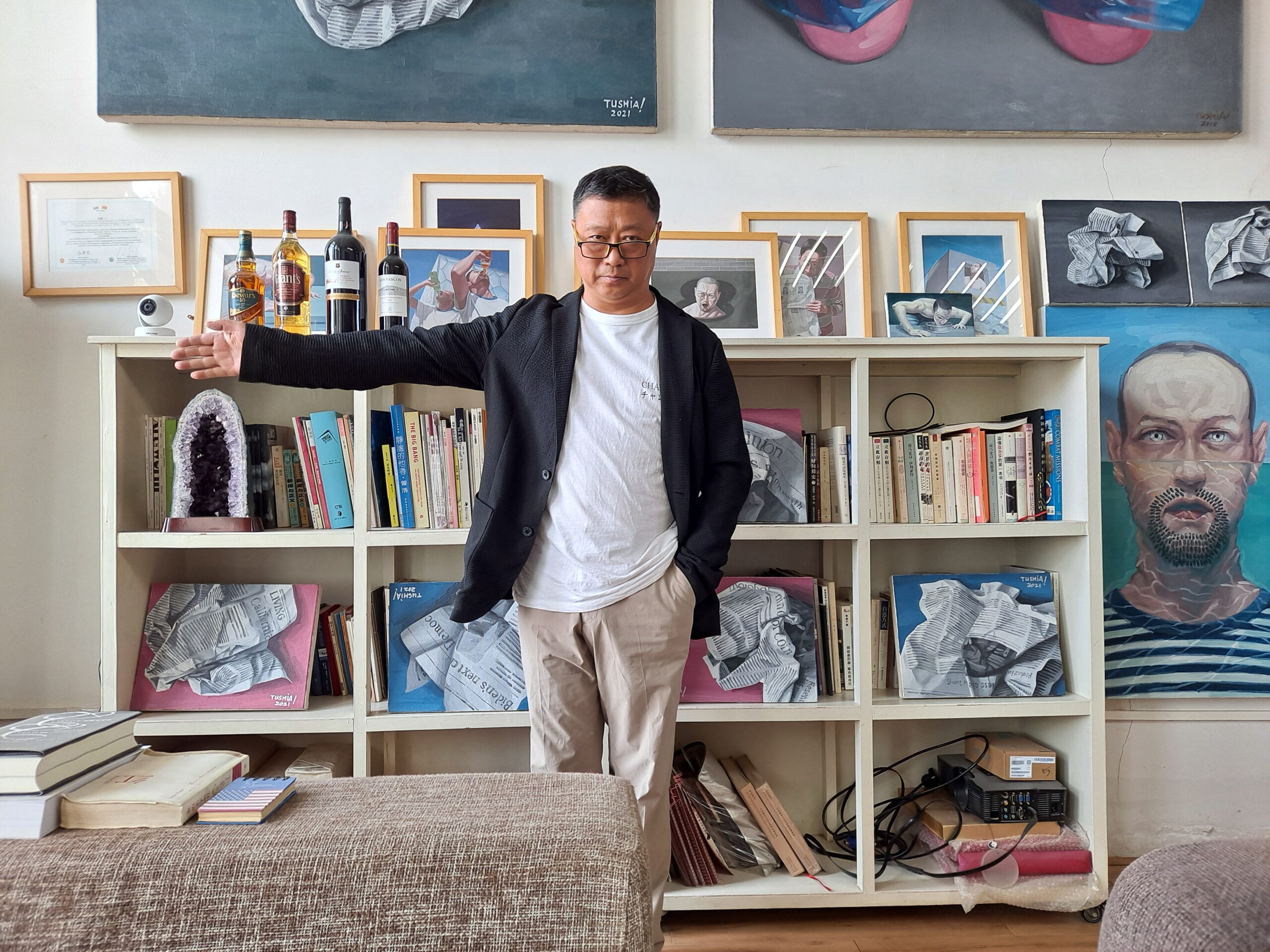
Chai na (China)
Tu Shia
“Please wear your mask” has become a standard political slogan that has been ubiquitous throughout the country in recent years. Those who wear masks and those who do not, those who demand that others wear masks and those who do not care whether others wear masks have formed two distinct political forces, and everyone socializes within these two different groups, including artists.
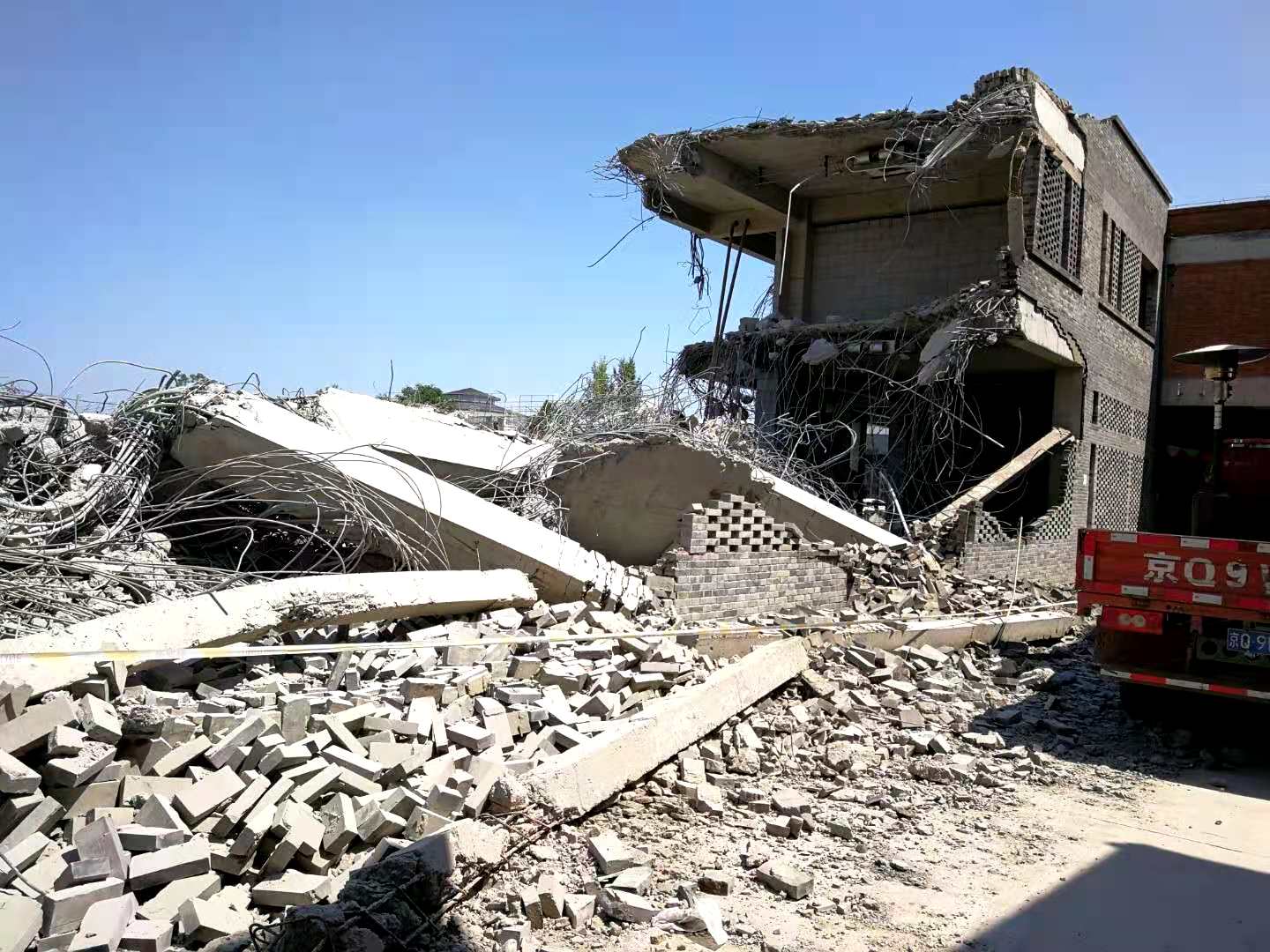
In June 2019, artist Tu Shia’s studio in Beijing was forcibly demolished.
I belong to the group of people who do not wear masks. I believe that viruses have existed on earth for hundreds of millions of years, and our human bodies have been polished to be able to coexist with all viruses. Wearing masks to isolate viruses from the air is the greatest harm to our human free spirit. If there is a new terrifying virus (manufactured), wearing a mask is useless. The virus will always find a way to enter your body before you have a chance to evolve resistance. Life and death are realities beyond our control. At this time, whether one has some kind of faith in their heart becomes particularly important!
In 2015,Tu Shia’s lecture recording at New Art Salon
In the era of the COVID-19 pandemic, politicians have found a great excuse to strengthen their leadership and control over society. These individuals, who consider themselves smarter and more morally upright than the average person, joined forces with medical experts who believe in masks – while another group of medical experts do not – to develop and organize various policies and plans that dictate what people must and must not do. People’s normal lives have been disrupted, and they cannot go out, gather, see friends, or even talk about topics that are not related to the virus. Those who dare to break the rules are ridiculed, condemned, or punished, including US House Speaker Ms. Pelosi (who did not wear a mask when entering a hair salon) and UK Prime Minister Johnson (who hosted a private beer party at 10 Downing Street). Meanwhile, I and the artists around me are fighting to defend our legitimate studios – it’s not really a fight, just hopeless resistance and procrastination. These artists’ studios will be illegally demolished!
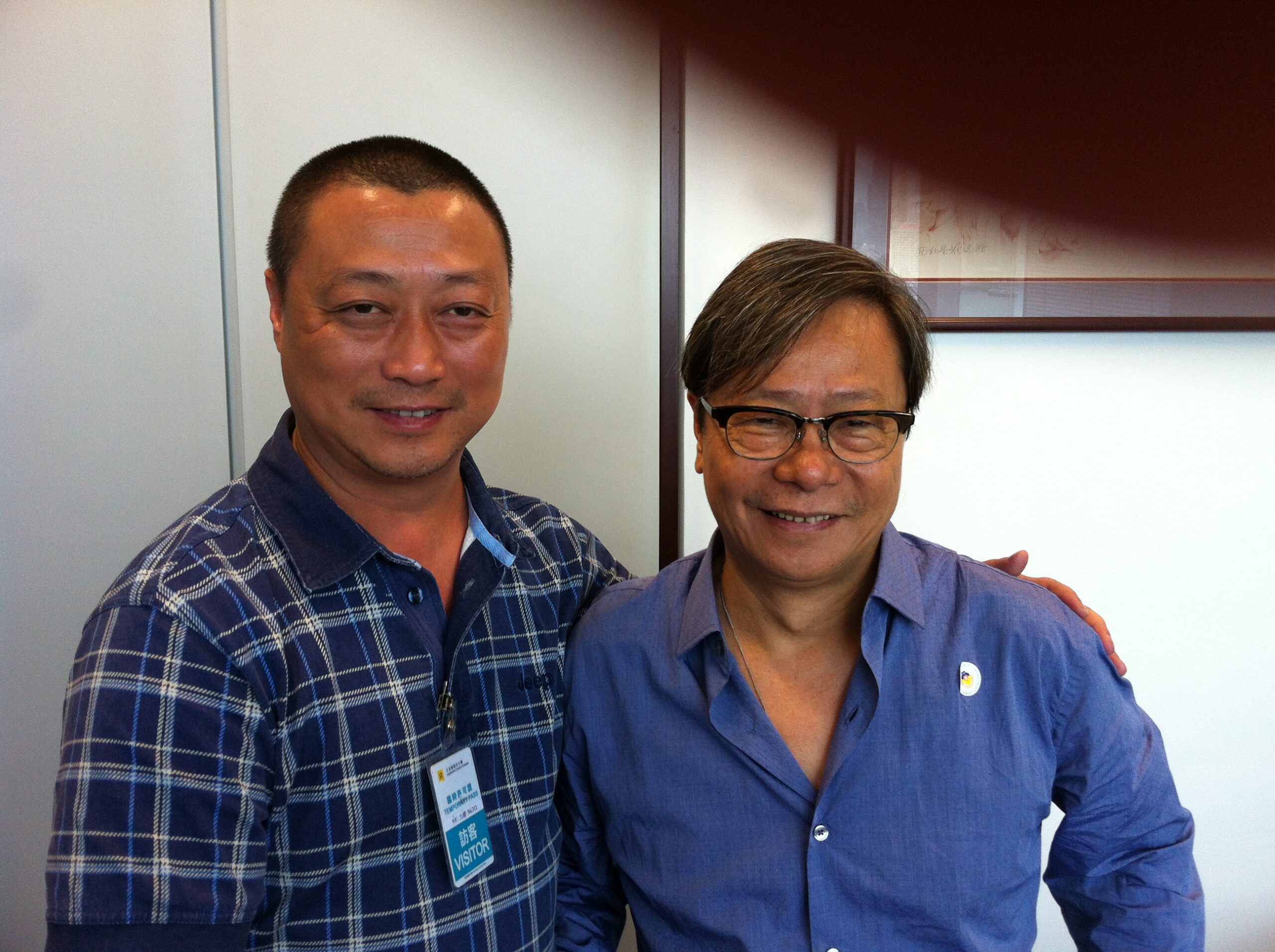
Meeting with Hong Kong Legislator Mr. Wong Yuk Man in 2013
One morning in June 2022, a notice was posted on the gate of our park, informing people that these buildings were illegal and would be demolished. However, no legal documents could be found to support the claim that these buildings were illegal. Because of this notice, the artists began to carefully read the relevant legal provisions. According to their reading and understanding, these buildings were standard, legal structures. But people no longer had the desire to argue – for years, art districts have been demolished for various reasons all over the country, and not a single one has succeeded in making an appeal, let alone receiving even a fake compensation. Artists have been classified as the low-end population of this city and have been arbitrarily driven from place to place. In August 2022, my last studio in Beijing was demolished – and before that, my previous studio was demolished in June 2019.
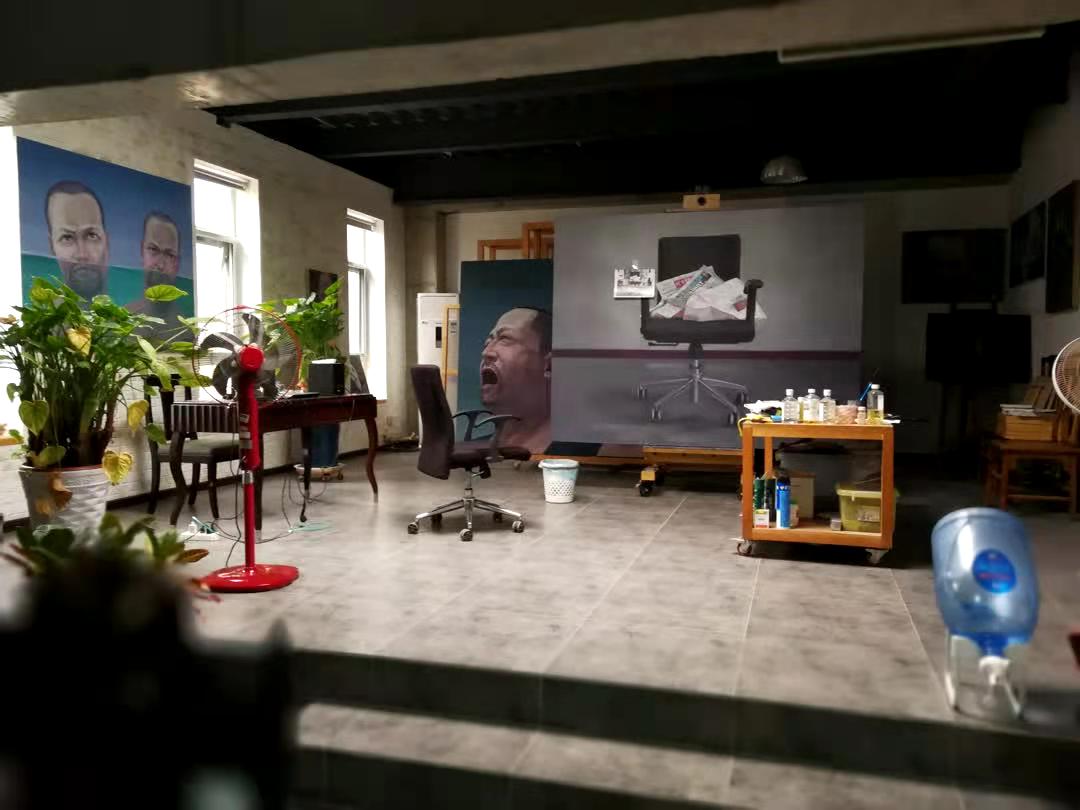
2019 Tu Shia Beijing Studio
Now, I have returned to Chongqing and re-established my studio away from the center. In this era of the Internet’s multicultural parallel universe, the concept of “center” and the lifestyle built upon it may be disappearing. Beijing is no longer the cultural and artistic center of China that it once was, nor is it the only gateway for China to connect with the world. The term “Beipiao” (referring to artists and cultural figures who have drifted to Beijing) has been used for a long time, referring to people who feel like they are floating above society, without cultural roots in the community, and unwilling to continue to absorb nutrients from that cultural soil. They self-exile, and drift aimlessly. Beijing was once the window and bridge for China to connect with the world, attracting many artists and cultural figures who were full of modern ideals, hoping to get closer to the world and further away from the decaying and declining culture. These people make up the Beipiao group. However, it is no longer the only way out for modern Chinese artists with ambitious dreams. I have returned here, settling down, in an age of unpredictable changes, trying to find a place to hide from the storm (although no one can really stay away from it), reading and painting, drinking a little wine with friends, and quietly waiting for changes – whether good or bad – to come. This is the experience conveyed by countless artists at turning points in history.
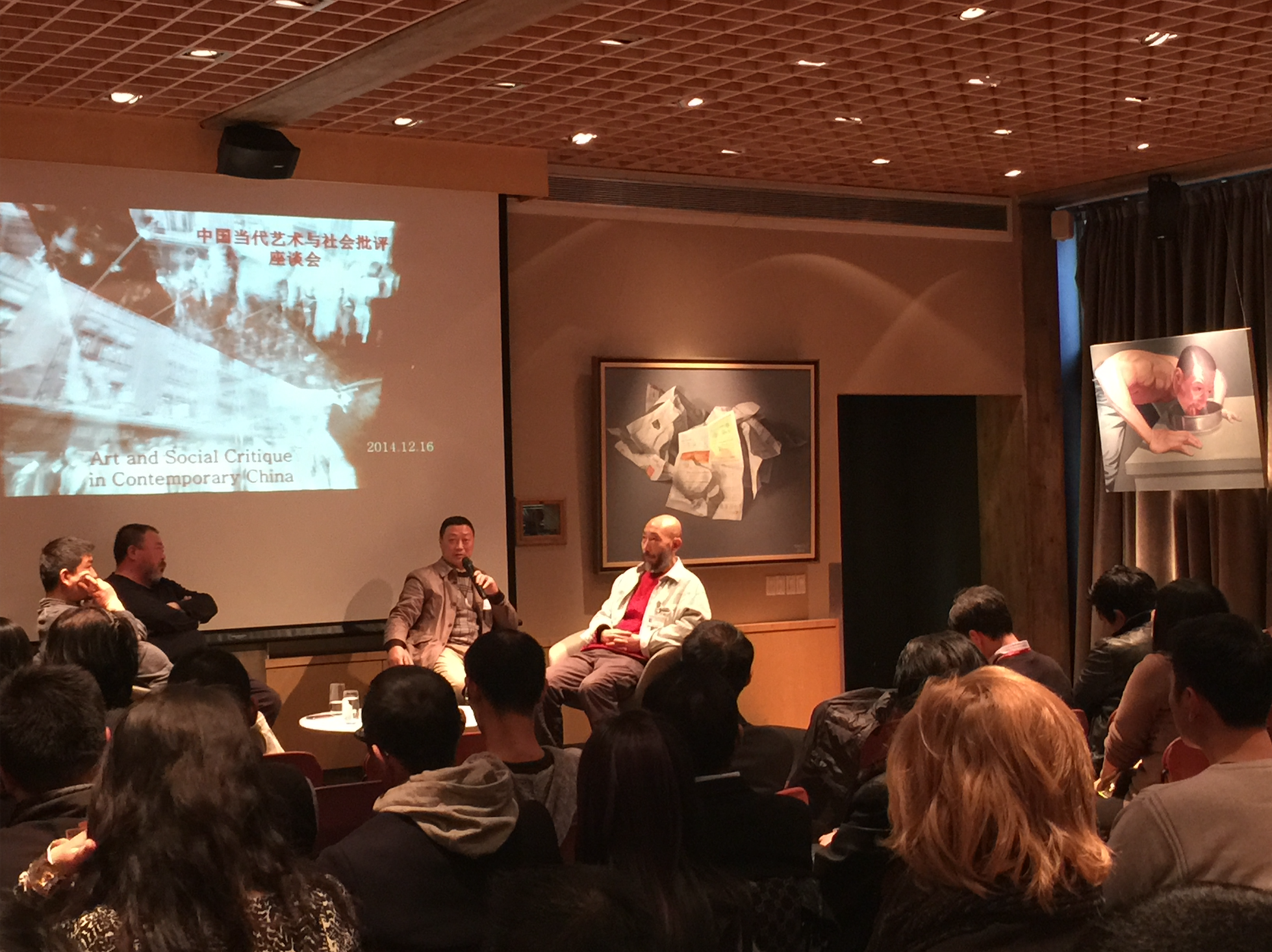
Attended the Symposium on Contemporary Chinese Art and Social Criticism at the Canadian Embassy in 2014
As an artist of my age, I no longer listen to rock music, watch movies like “Guess the Train,” burn my life with passionate emotions, or proclaim my beliefs through unconventional words and actions or eccentric clothing. I no longer believe that art can change the social status quo too much (although great art can always transcend time). I prefer to find the soul’s support and timeless aesthetics in the melody of Mozart’s Requiem. Art may not always be eternal, but the pursuit of art is eternal.
March 8, 2023, Beibei China.

Tu Shia
Born in June 1966 in Chongqing, I developed a habit of enjoying summer from an early age, basking in the sunshine with minimal clothing, giving me the illusion of infinite freedom. As a response to the country’s call for the Third Front construction, I moved with my parents to the mountainous regions of Sichuan. I completed my education from kindergarten to high school in a military enterprise community before becoming an apprentice at the factory. Due to my love for drawing since childhood, I was admitted to Sichuan Fine Arts Institute as a worker in 1986. At that time, there were very few artists, let alone professionally trained ones. With my sunny disposition and the atmosphere of freedom and openness in the 1980s, I developed a character full of bold and unrealistic expectations for the future.
In 1989, I participated in and led the student movement that cannot be spoken of even today while still a student. I was subsequently sent to a rural middle school as an art teacher.
In 1991, I resigned from my government position and became a freelance artist in Chongqing, supporting myself by creating large outdoor advertisements. I participated in the first Guangzhou Biennale of Contemporary Art in 1992 and was nominated for an award. In 1993, I participated in the first National Oil Painting Biennale at the National Art Museum of China and won the Academy Award. However, due to suspicions of political leanings in my work from officials in the Ministry of Culture, my award was recklessly revoked. To make ends meet, I joined a clothing company owned by Taiwanese in Chongqing in 1993 and worked on window and graphic design. It was during this time that I began to learn design software such as Corel Draw, Photoshop, and Page Maker. It was also during this period that I met the love of my life, who was a member of the model team that frequently came to the clothing company for presentations.
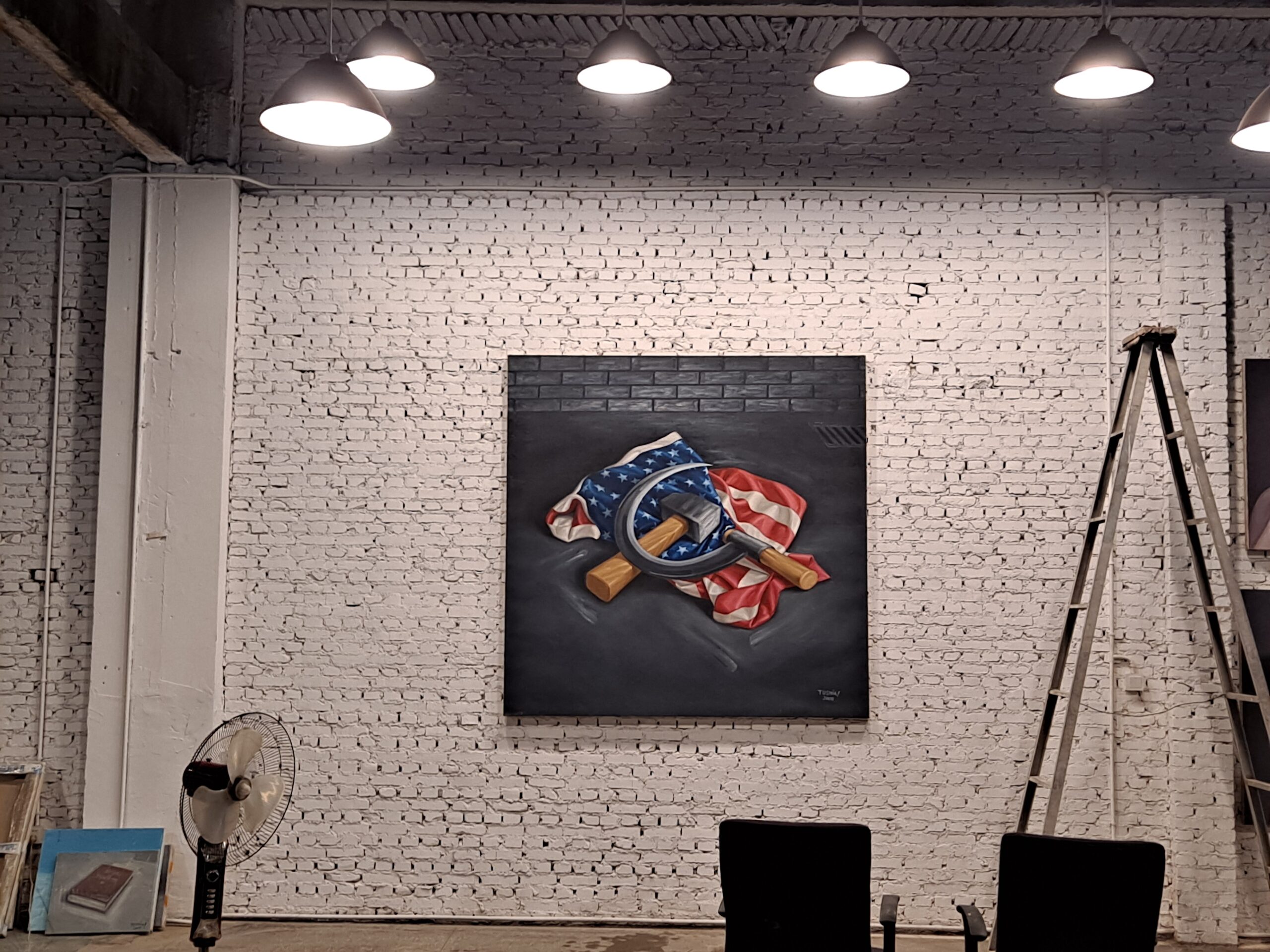
studio scene
After 1996, I gradually stopped drawing. At that time, there was no art market, and I had to rethink my life. I started an advertising company with some friends, but it was difficult to sustain. I gradually realized that in China, advertising companies do not make money based on your creativity and artistic ability, but by the resources of the media, which are controlled by the state.
In 2001, a small property developer became my friend. He appreciated people like me who had received a good education (including the reading habit I had maintained over the years), were artists, smart, and articulate. He wanted to share his next development project with me. We struggled for a few years and everything seemed to be falling into place, but ultimately, the project fell through. Due to a change in leadership, the new leaders gave the land that had been given to us by the previous administration to another company.
I rested at home, waiting for another opportunity. During that time, another friend of mine acquired a small foot massage parlor and mahjong hall. He asked me to become his partner, and I played mahjong with a group of guys there for a few years. Later on, I realized that my life could not end there. I could not stay at the mahjong table forever. I was tired of waiting and wanted to get back into art. I once had a great ideal in art, and I needed to go back to it.
Artists are people who float in a society. They have no roots, and they are always dissatisfied with the cultural reality of their society. They are unwilling to absorb nutrients in traditional culture and their sights are set on the world. Artists have no settled abode, and they keep moving forward. I decided to go to Beijing.
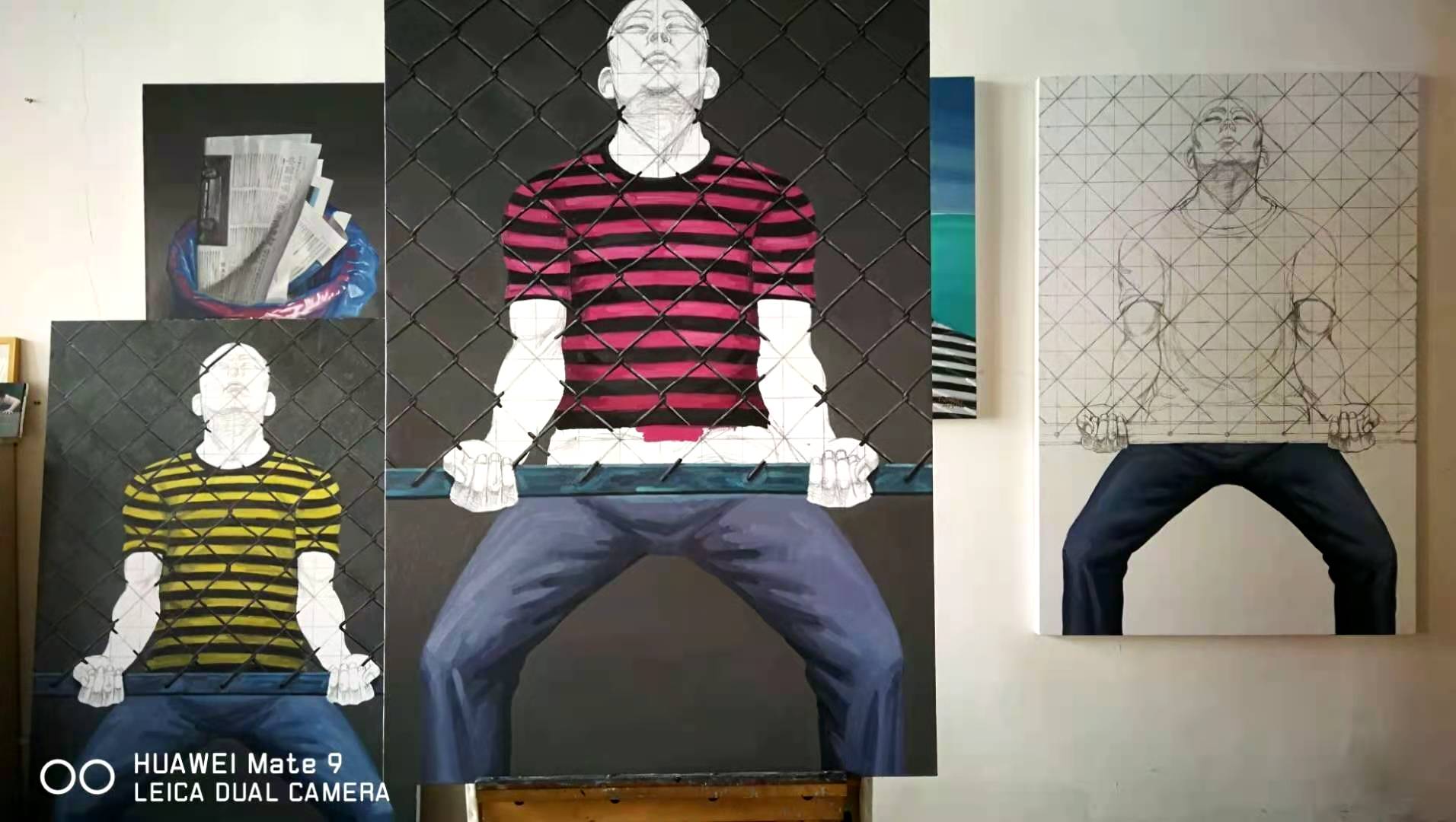
Tu Shia Beijing Studio
In 2008, I established a studio in Beijing, and my works were collected by the White Rabbit Contemporary Chinese Art Collection in Australia that same year. In 2012, I was interviewed for “Standing Memory – The Spiritual Records of 500 Chinese” and the book was collected by the National Library of China and the Central Party School Library, making me a research subject in the country. In 2013, I met with liberal legislators such as Martin Lee in Hong Kong and was interviewed by Radio Free Asia. In 2014, I participated in the China Contemporary Art and Social Critique Symposium at the Canadian Embassy in China. In 2015, I was interviewed by “The World of Chinese,” an English magazine published by the Commercial Press, and my works were collected by the Tokyo National Museum of Modern Art’s Nitchu Sumi-e Exhibition and the Van Gogh Museum in London.
In 2019, my studio at Rome Lake in Shunyi, Beijing was forcibly demolished, and in 2022, another studio at Rome Lake was also forcibly demolished. Afterward, I returned to Chongqing to establish a new studio.
Now, I am in Beibei, Chongqing, where many Chinese cultural figures took refuge during World War II.

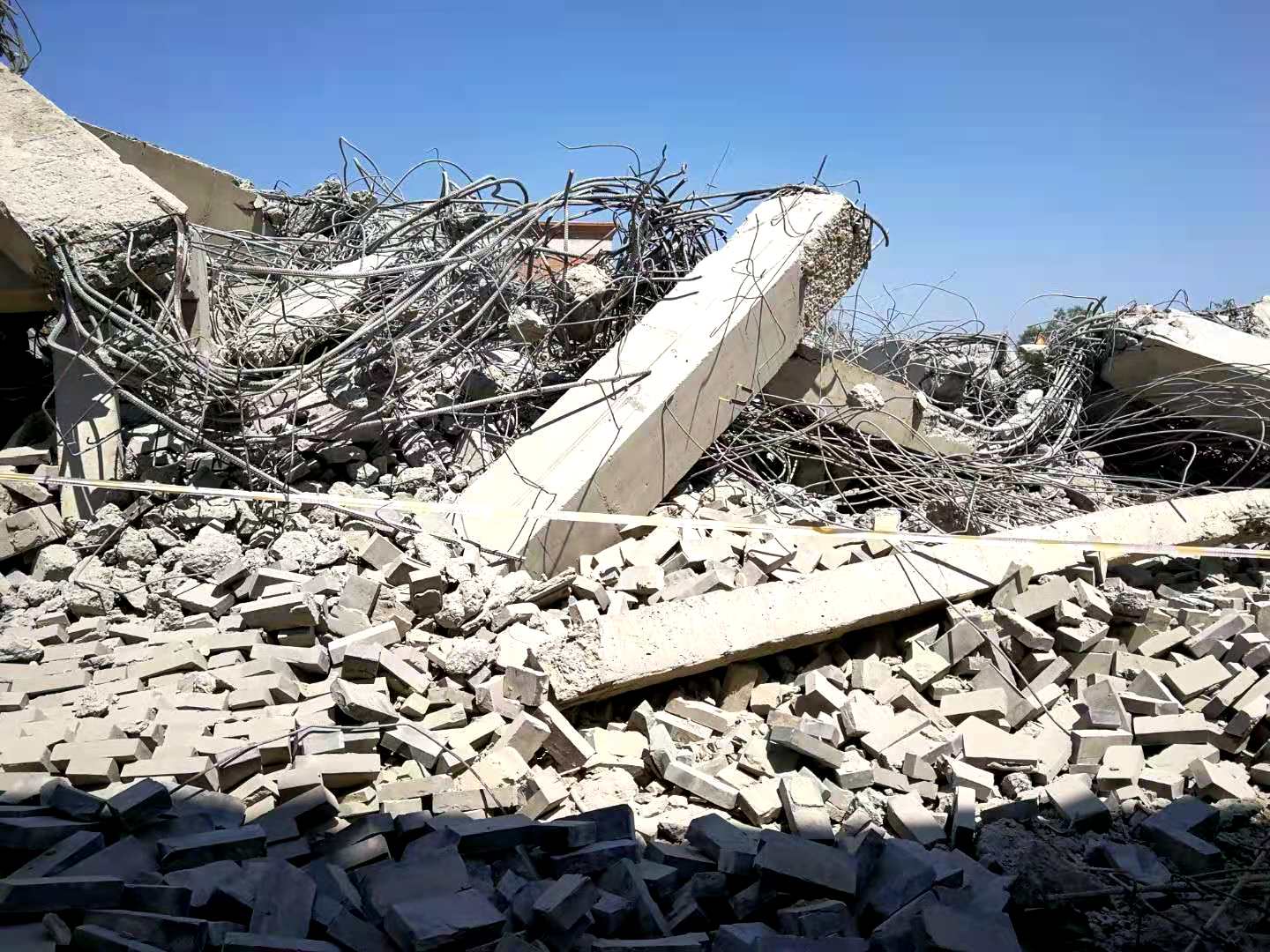
拆 哪
杜峽
“請你帶好口罩”,最近幾年來,這句時刻遍布全國的話語已經成為了一句標准的政治口號,戴口罩的人和不願戴口罩的人,要求別人戴好口罩的人和不在意別人是否戴口罩的人,已然形成了兩種邊界清晰的政治勢力,所有的人都在這兩種不同的人群裏進行社交,藝術家也不例外。
我屬於不戴口罩的那群人,我認為地球上的病毒已經存在數億年了,我們人類的肉體已經被打磨得能夠跟所有病毒共存,不用戴口罩來隔絕病毒與空氣,與空氣的隔絕才是對我們人類自由心靈的最大傷害。如果有什麼新的可怕病毒(被制造)出來,那麼戴上口罩也沒用,病毒總有機會通過各種微小的渠道進入你還沒來得及演化出抵抗力的身體,生存和死亡便是由不得我們個人的現實,這個時候,人的心裏是否擁有某種信仰就顯得尤為重要!

杜峽接受立此存照的采訪,該采訪已出版並被中共中央黨校收藏
政客們在病毒大流行的年代找到了加強權利領導社會的絕好理由,這些自認為比普通人的智商和道德都明顯高出一截的人,夥同相信口罩的那部分醫學專家——另一部分醫學專家不相信口罩——開始制定並組織各種政策和規劃,要求人們必須做什麼和不能做什麼,人們的正常生活開始被打亂,不能上街,不能聚會,不能見朋友,甚至不能談論不在乎病毒的話題,那些敢於破戒的人被嘲笑,被譴責或被懲罰,這其中包括美國眾議院議長佩洛西女士(她不戴口罩進出理發店)和英國首相約翰遜(他在唐寧街舉辦私人啤酒派對)。而我,以及我身邊的藝術家,卻在為保衛我們合法的工作室而戰鬥——其實都不叫戰鬥,僅僅是無望的抵抗和拖延。這些藝術家的工作室將被非法拆除!
2022年6月的一個早上,我們園區的大門被貼上一個通知,告訴人們這裏是違法建築,將被拆除,然而所有的法律文件都找不出這些建築違法的理由,倒是由於這個通知,這些藝術家開始仔細閱讀相關法律條文,而根據大家的閱讀和理解,這兒是標准的合法建築。可是,人們已經沒有了申辯的欲望——數年以來,被以各種理由拆除的藝術區遍布各地,沒有一樁申辯成功,甚至連一點假意的賠償都沒有,藝術家被劃歸成了這個城市的低端人口而被任意趕來趕去。2022年8月,我在北京的最後一個工作室被拆除——在這之前的2019年6月,我的上一個工作室被拆除。
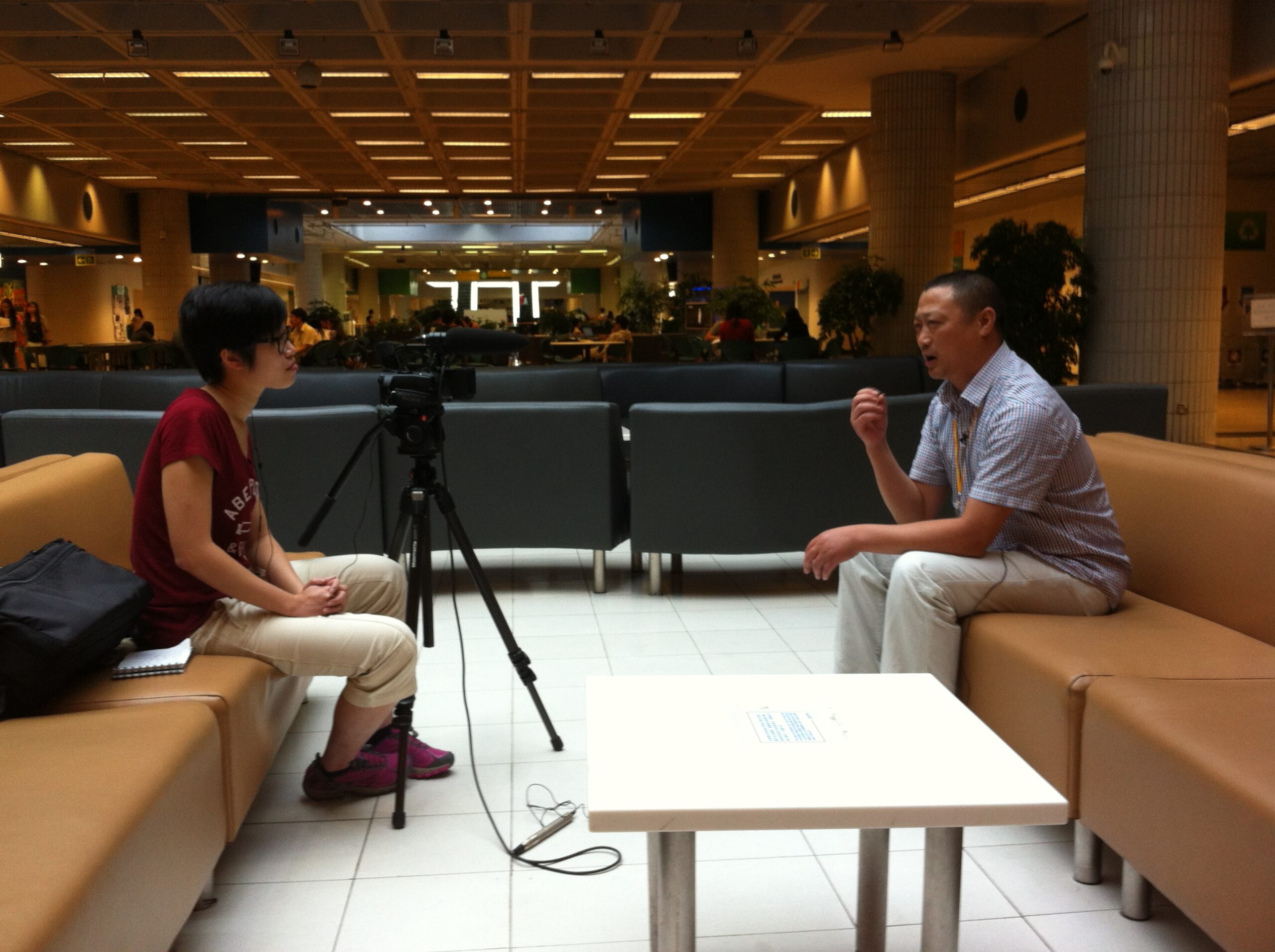
2013年杜峽接受自由亞洲的采訪(In 2013, Tu Shia was interviewed by Free Asia)
現在,我回到了重慶,重新建立了工作室,遠離中心。在這個互聯網多文化平行宇宙的時代,可能“中心”的概念以及根據這個概念而建立的生活方式正在消失,北京早已不再是中國的文化人和藝術家所向往的中心地帶,也不再是中國通往世界的唯一窗口,北漂(自古以來的藝術家和文化人都認為自己是飄流在這個社會之上的人,他們自認為沒有所在社會的文化根基,他們也不願意繼續從那個文化土壤裏面吸取養分,他們自我流放,飄忽不定。北京曾經是中國通往世界的窗口和橋梁,很多充滿現代理想的藝術家和文化人來到這裏,以便離世界更近,離腐朽沒落的文化更遠。這些人構成了被稱為北漂的族群。)也不再是中國的現代藝術家職業生涯和遠大理想的唯一出路。我回到這裏,安靜下來,在一個風雲變幻狂莫測即將驚濤駭浪的年代,尋找一個遠離浪濤(其實沒人遠離得了)的所在蟄伏下來,讀書畫畫,與朋友喝點兒小酒,靜靜等待變化——無論好與壞——的到來,這是無數個時代轉折點的藝術家所傳達的經驗。
我這個年齡的藝術家,基本不再聽搖滾樂,不再看《猜火車》那樣的電影,不再靠狂熱的激情來燃燒生命,不再以離經叛道的言行和奇裝異服來宣示自己的理念,不再太相信藝術能改變社會狀態(盡管偉大的藝術總是能夠超越時代而存在),我更願意在莫紮特安魂曲的旋律裏找到靈魂的依托和那些關於雋永的審美。藝術並不都是永恒的,但是藝術的追求卻是不朽的。
2023年3月8日,中國北碚
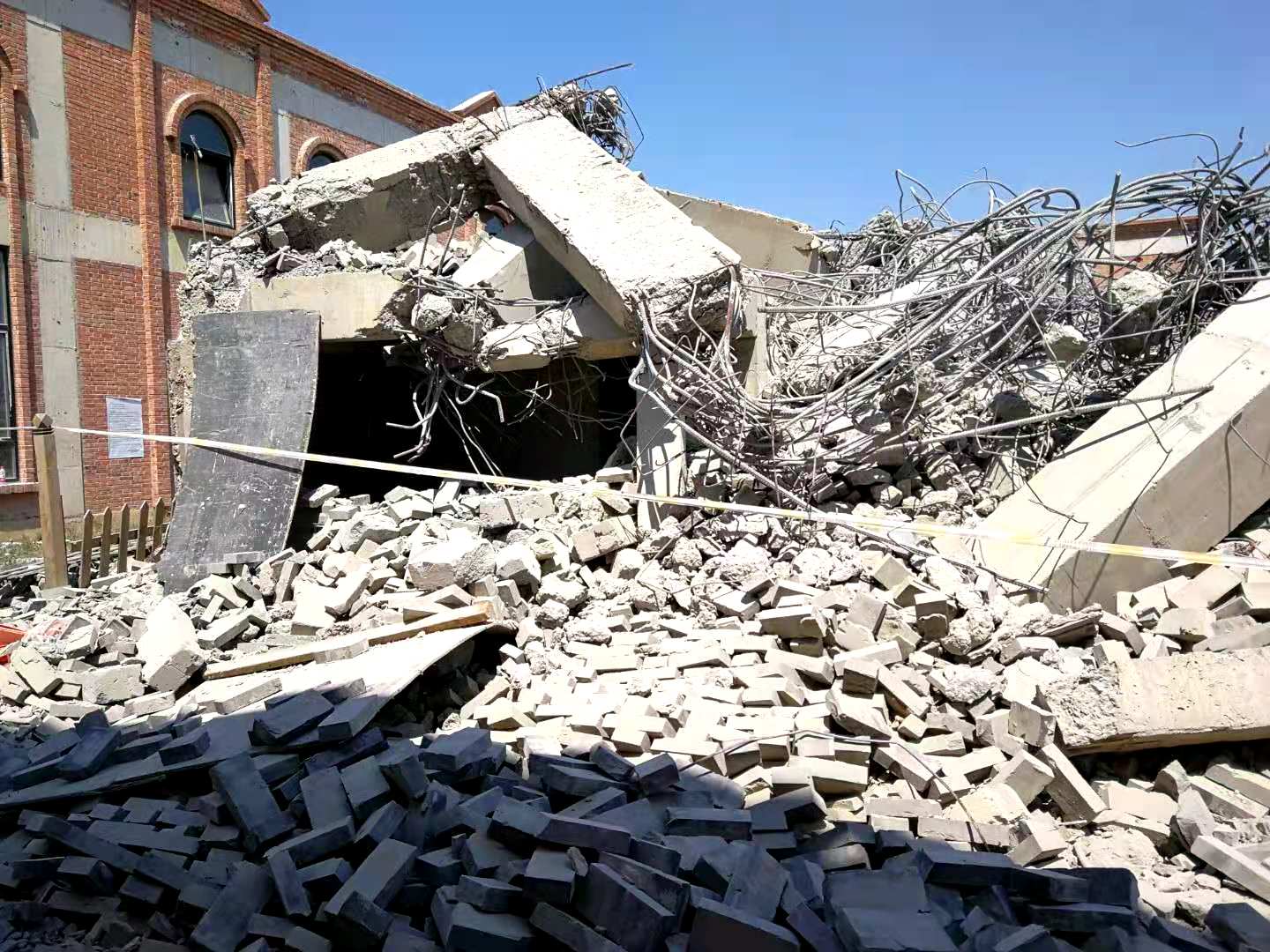
2022年,杜峡在北京的工作室被强拆。
杜峽
1966年6月出生於重慶,從此落下喜歡夏天的毛病,陽光燦爛又穿得很少總給人無限自由的幻覺。剛一出生就隨父母響應國家三線建設的號召遷居四川的山區,在一個軍工企業的社區完成了從幼兒園到高中的學業,隨即進入這個工廠當了學徒工。由於從小喜歡畫畫,1986年以工人身份考入四川美術學院,那個時候的畫家很少,受過專業培訓的畫家更少,喜歡太陽的性格加上青春期又碰巧遇到1980年代的自由開放的氣息,成就了我對未來永遠充滿胆大妄為的美好期盼的性格。1989年以學生身份參與並領導了那場至今都不能說的學生運動,隨即被下放到農村中學當美術教員。
1991年,我辭去公職回到重慶當自由職業藝術家,靠繪製巨型戶外廣告維持生計。1992參加第一屆廣州當代藝術雙年展,並獲獲獎提名,1993年參加在中國美術館舉辦的第一屆中國油畫雙年展,獲學院獎,但是由於文化部的官員對我的作品可疑的政治傾向產生懷疑,魯莽的取消了我的學院獎。由於生存的需求,1993年我進了一家台灣人到重慶來開的服裝公司,在裡面做櫥窗設計和平面廣告設計,這個時候我開始接觸電腦設計軟件,我是一個腦子很靈活動手能力也很強的人,不多久就學會了Corel Draw,Photo Shop,Page Maker等軟件。在這期間,我碰到了我的愛情,她是常來這家服裝公司進行展示的模特隊的一員。
2015年,杜峽在新藝術沙龍的講座錄音
1996年之後,我漸漸地很少畫畫了,那個時候沒有藝術市場,我得為我的人生重新做打算。我跟幾個朋友開了一家廣告公司,艱難維持,我漸漸發現,中國的廣告公司不是靠你的創意和藝術能力賺錢,而是靠媒體的資源賺錢,而所有媒體被掌握在國家的手裡。2001年開始,一個小型的房地產開發商跟我做了朋友,他很欣賞像我這樣的人,受過良好的教育(當然包括這些年我保持下來的讀書的習慣),藝術家的身份,聰明機智,談吐不凡,他要跟我分享他的下一個開發項目。我們為此奮鬥了幾年,眼看一切水到渠成,可是最終,這個項目黃了,由於政府換屆,新領導把前任已經給我們的那塊地重新批給了另外的公司。我在家裡休息,等待另外的機會,這時我的另一個朋友盤下了一個小型的洗腳城兼麻雀館,叫我跟他合夥,我在那兒跟一幫哥們兒玩了幾年的麻將。後來我想,我的人生不能斷在這裡,不能停留在麻將桌子上,我厭倦了這樣的等待,我想搞藝術了,我曾經有一個偉大的理想在藝術上,我得回去。
藝術家是飄忽在一個社會上空的人,他們沒有根基,他們總是對所處社會的文化現實感到不滿,他們不願意在傳統文化的土壤裡吸取養分,他們的目光在世界上。藝術家沒有安居之地,他們不停的在移動(你也可以解釋成前進),我決定去北京。
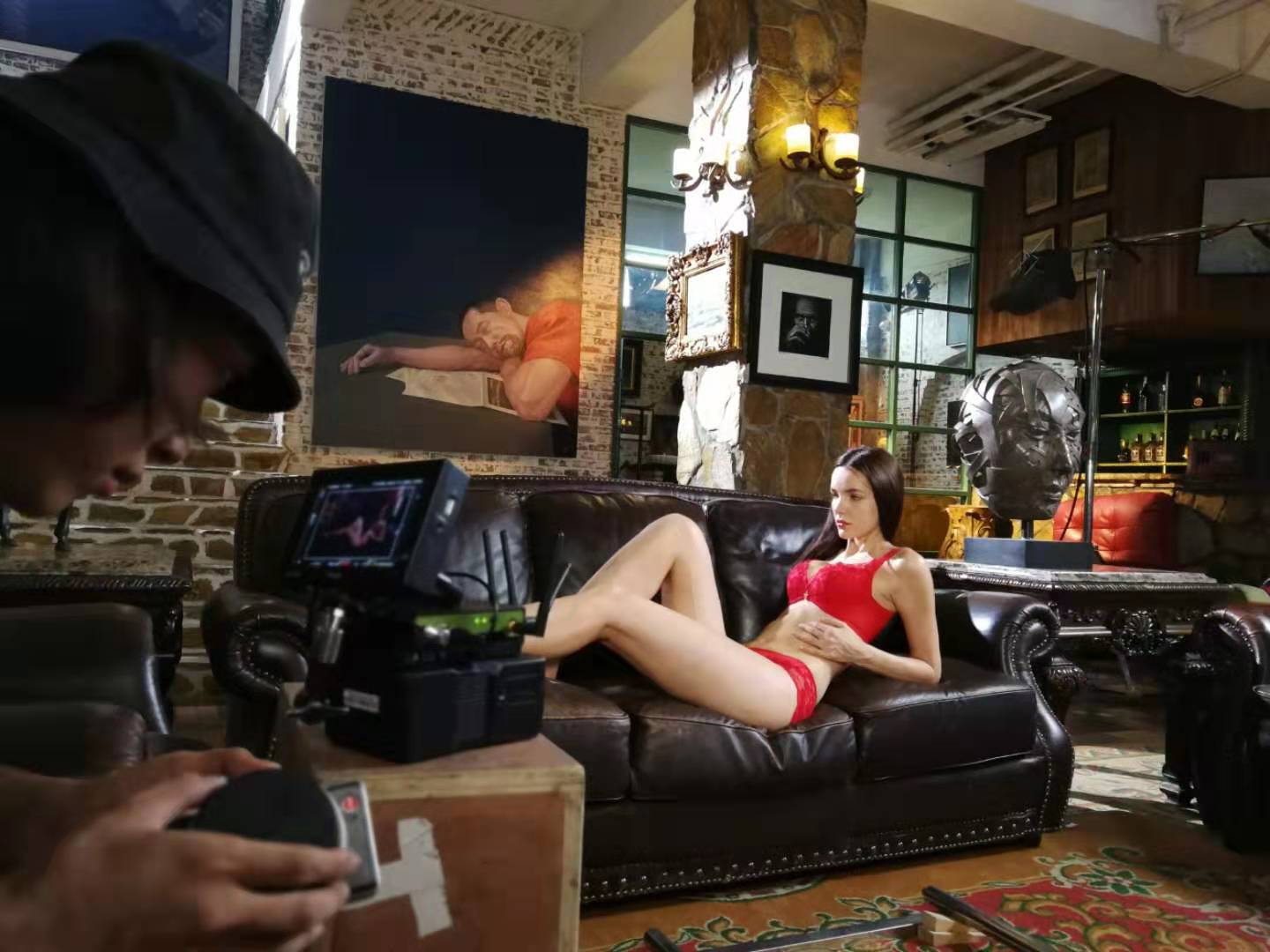
studio scene
2008年,我到北京建立了工作室,同年作品被澳大利亞白兔中國當代藝術基金會收藏,2012年接受《立此存照——500個中國人的心靈記錄》專訪,該書被中國國家圖書館和中央黨校圖書館收藏,我成為這個國家的研究對象。2013年去香港會見黃毓敏等自由派議員,並接受自由亞洲採訪,2014年到加拿大駐華使館參加中國當代藝術與社會批判座談會,2015年接受商務印書館在美國發行的英文雜誌《The World of Chinese》專訪,同年作品被東京都國立美術館日中墨畫會收藏,同年作品被倫敦梵高故居美術館收藏。2019年在北京順義羅馬湖的工作室被強拆,2022年在羅馬湖的另一個工作室再次被強拆,之後回到重慶重新建立工作室。
現在,我在重慶的北碚,正如二戰期間,有很多中國的文化人遷到了這裡暫時避風。

與我們聯系:
網站:http://www.nyrcart.org
微信公眾號:紐約當代 NYRcA
E-mail:nyrcart@gmail.com